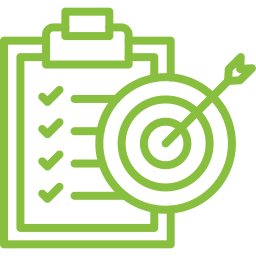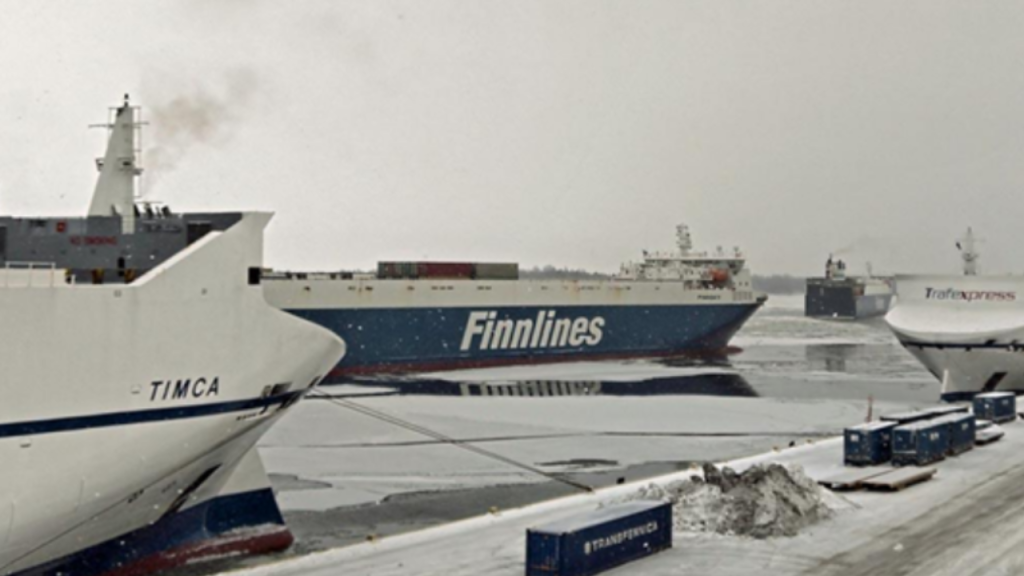what is the pilot about?
AI-based Optimization of Logistics for Sustainability
The pilot project aims to improve the efficiency of cargo flows through the port and reduce emissions by using an AI-based optimization tool. This tool will provide handling plans based on schedules and cargo volumes for incoming shipments arriving by truck or train. The coordinated use of warehouses, equipment, and workers will be enabled. The objective is to minimize the driving distance within the port terminal, which will also help in reducing emissions.
Pilot site
The Port of HaminaKotka consists of multiple terminals, including the Hietanen RoRo Terminal, which is the primary pilot location managed by Steveco Oy.
This terminal processes approximately 2.4 million tons annually, with exported forest products such as paper, pulp, and sawn timber accounting for 80% of this volume. Export products are primarily transported to the port warehouses by rail, although a substantial amount of cargo also arrives by truck. The terminal offers around 130,000 square meters of warehouse space and 67,700 square meters of storage area. It utilizes a customized IT system (FLOW) that is integrated with customer IT systems.
The principal customers of the Hietanen RoRo Terminal have their own logistical solutions, and aligning the objectives of all partners—including customers, trucking companies, port authorities, and railway operators—will enhance the overall efficiency of the logistical system. Steveco has implemented the Truck Appointment System (TAS), resulting from previous projects, which provides better insight into incoming truck schedules. Additionally, the PORTMOD simulation tool is employed to improve the planning of required asset capacity.
Who is involved?
- Pilot Partner / Steveco: works as terminal operator, testing of the tool
- Subcontractor / Envare Solutions Oy: offers calculations for emission related KPIs at the port terminal
- Scientific Support / VTT: develops the AI technology, data collection, simulation
Challenges
Which difficulties wants this pilot to solve?
Ports and terminals seek to optimise overall flow by aligning the interests of various stakeholders. Customers naturally optimise their own cargo flows, which also impacts port operations and the entire logistics chain. Consequently, cargo combinations (boards, cartons, pallets/reels) vary between working days, requiring different types of forklifts (3-ton, 8-ton, and 18-ton, etc.).

Objectives
What drives the pilot activities?
The pilot aims to improve the efficiency of cargo flows through the port and reduce emissions using an AI tool. The focus is on land-side operations, where cargo moves within the warehouse.
approach & SOLUTIONS developed
HOW TO REDUCE EMISSIONS & OPTIMISE PROCESSES?
An AI tool is currently under development for simulation testing with data from 2025. This tool will compare real-life scenario data with baseline warehouse operations, covering both best and worst case scenarios. It will generate handling plans for truck and train shipment schedules and cargo volumes. Additionally, the tool will provide unloading plans to coordinate warehouses, equipment, and personnel for companies in the forest industry.
- Assignment of shipments to the optimal warehouse storage location and/or direct further transport.
- Expansion of the PORTMOD tool from TRL5 to TRL7 with an AI-based tool.
- Creation of an interface between the warehouse work planning system (VTS) and the AI tool.
- Creation of an intelligent optimization algorithm

expected outcomes
- Optimization of the use of workers, working machines, warehouse spaces
- Reduced unloading time of trucks and trains at the port by 15%
- Reduced emissions of working machines by approx. 10 % as a result of higher productivity
- Increased warehouse passage by 15% more cargo
- Advanced handling of cargo by workers and port equipment by 20%
- Minimization of total driving distances within the terminal
- With new data, simulated port operation with basic rule-based order placement logistic gave 10% shorter distances than historical data, but the results still need to be validated
- Reduction of total emissions of around 15-20%
HOW WILL THE OUTCOMES BE MEASURED?
The Pilot gathers data from the Terminal Operating System and manual observations. The baseline information relies on both manual measurements and historical records. Similarly, pilot results will be calculated for comparability.


